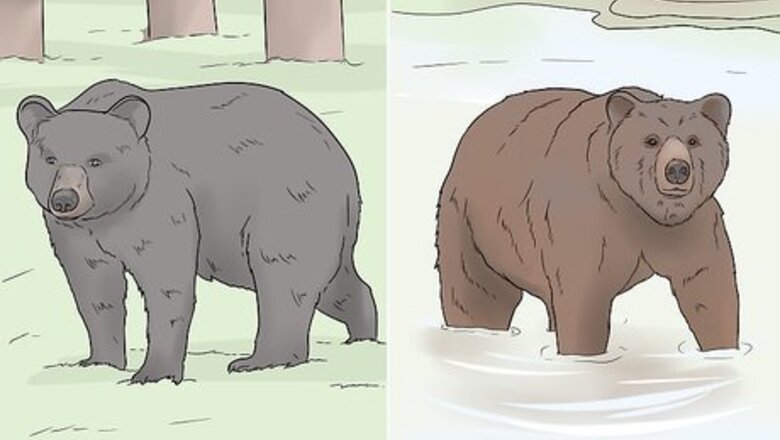
views
Bears
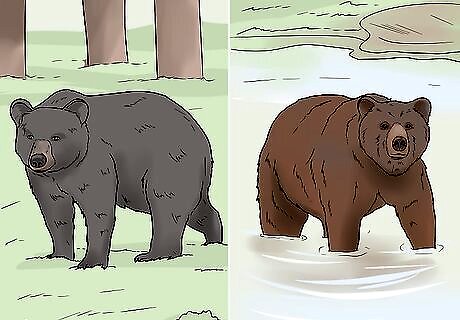
Look at the color of the bear's fur. It's important you determine what kind of bear you're dealing with. The way you respond to a black bear encounter will be very different than a brown bear encounter. If the bear has black fur, it's a black bear. Full-grown black bears are usually smaller than brown bears. If the bear has brown fur, it's a brown bear. Brown bears also have a pronounced hump between their shoulders that black bears don't have. Grizzly bears are a subspecies of brown bear.
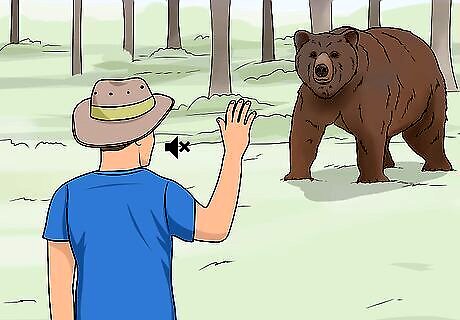
Let the bear know you’re a human and not prey. Speak in a low, calm voice and wave your arms slowly. Do not scream or make any high-pitched noises or you could agitate the bear.

Slowly move away from the bear sideways. Don’t take your eyes off the bear. Moving sideways will prevent you from tripping. Do not run. Bears can run faster than humans and they enjoy chasing their prey. If the bear starts to follow you, stop moving.
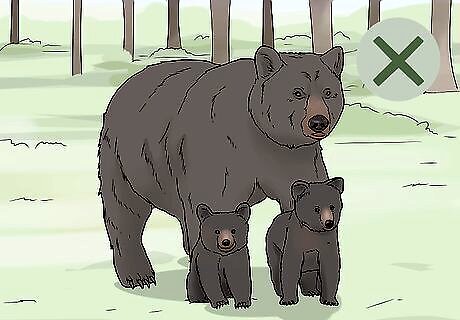
Never approach a female bear with her cubs. Female bears are extremely defensive of their cubs, and they're more likely to attack humans.
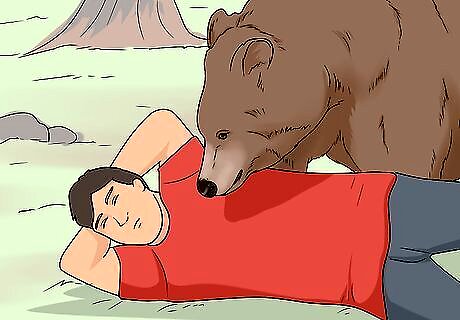
Play dead if you’re attacked by a brown bear. Get on the ground and lay flat on your stomach. Clasp your hands together behind your neck. Spread apart your legs so it’s harder for the bear to flip you over. Wait for the bear to lose interest and leave. If the bear doesn’t stop attacking you, reach for a nearby rock or branch and fight back. Hit the bear in the face as hard as you can repeatedly.
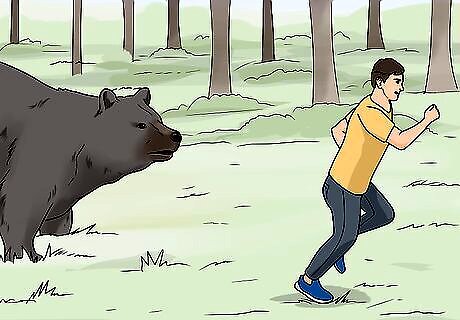
Run if you’re attacked by a black bear. Do not play dead if a black bear attacks you. Try to find shelter in a nearby car or building. If you can’t escape, hit the bear in the face repeatedly with any nearby objects.
Wild Cats and Wolves
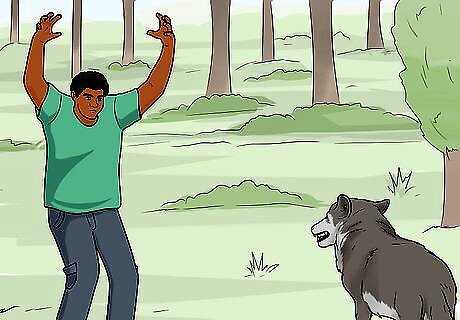
Make yourself appear larger to intimidate the wild cat or wolf. Wave your arms over your head. Unzip your jacket and open it so you seem bigger.
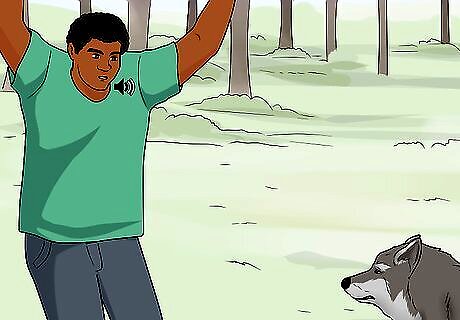
Speak in a confident, low voice. Don’t scream or make any high-pitched noises. Speaking in a low voice will show the wild animal you’re a human and not prey.
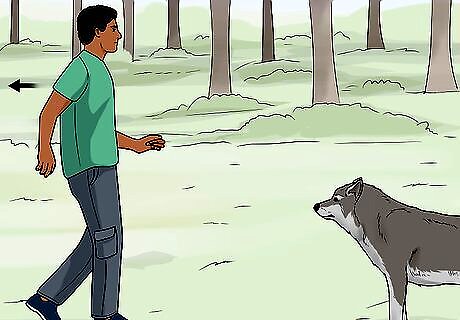
Remain calm and back away slowly. Do not turn away and run or you could trigger the animal to attack. Maintain eye contact with the animal as you’re backing away.
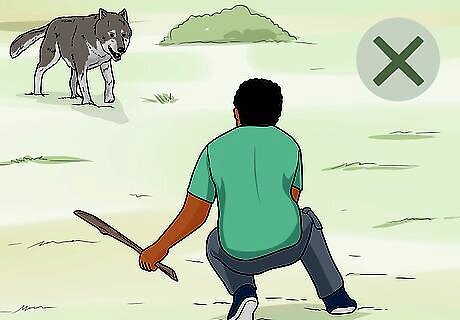
Never crouch down or bend over to pick something up. This will make you look small and weak to wild cats and wolves. Maintain an upright standing position so the animal knows you’re a human and not prey. If you’re with children, it’s important that you pick them up without crouching down or bending over. Reach your arms down to grab them without lowering your body.

Throw things in the direction of the animal. Only do this if you can reach rocks or branches without having to crouch, bend over, or turn away. And if you have pepper spray, that can work too because it's eyes don't like pepper spray, so you can run away to safety afterwards. You don’t need to aim for the animal itself. You’re just trying to scare it off by throwing things near it. If a wild cat or wolf approaches you, start throwing things directly at it.
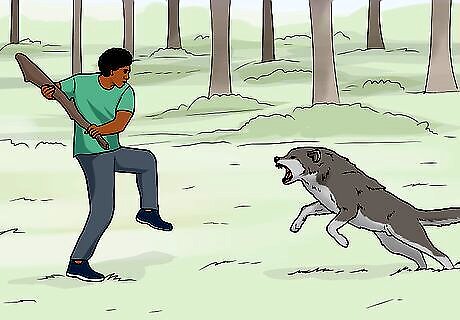
Fight back if the animal attacks you. Try to remain standing as wild cats and wolves will most likely try to bite your head and neck. Use any tools you have available to hit the animal in the head, including nearby rocks and branches. If you have nothing to fight with, use your fists. Continue beating the animal as hard as possible until it flees.
Snakes

Be mindful of where you place your hands and feet. Watch the path in front of you as you’re walking. Look at tree branches and trunks before you grab onto them. If you see a snake, stop immediately. Assume any snake you encounter in the wild is venomous.
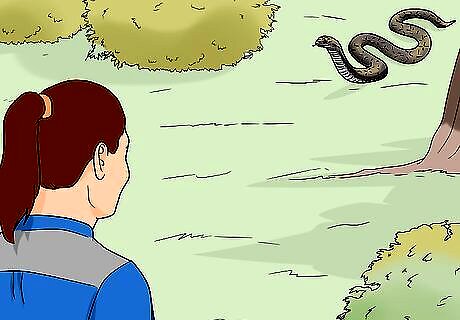
Quickly back away from the snake. Don’t try to step over the snake or move it out of your way. Snakes can strike a distance that is half the length of their body, so make sure you’re far away from the snake before you try to go around it.

Don’t try to suck the venom out if you’re bitten. You can’t suck snake venom out with your mouth. Instead, focus on seeking help.
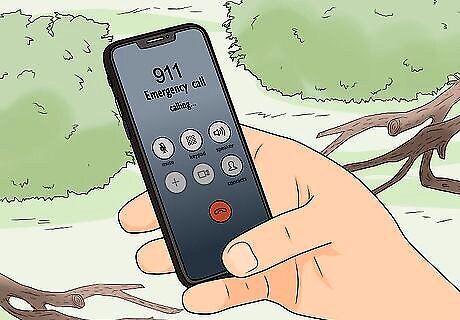
Seek help immediately if you’re bitten. Call emergency services if you have service and let them know your location. If you don’t have service, find someone with a phone or vehicle that can get you to a hospital. Try to get a good look at the snake that bit you. It will help the hospital treat your wound faster if they know what kind of snake bite it is.

Keep the bitten area below your heart if possible. If you were bitten on your arm or leg, don’t lift them above your heart.
Staying Safe
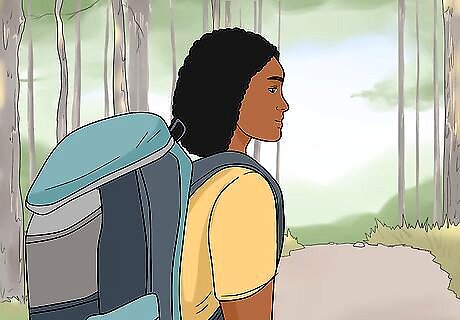
Be aware of your surroundings. Don't wear headphones or look down at your phone screen when you're walking through the forest. Keep your head up and pay attention to what's going on around you. You're less likely to startle a wild animal if you notice them from a distance first.
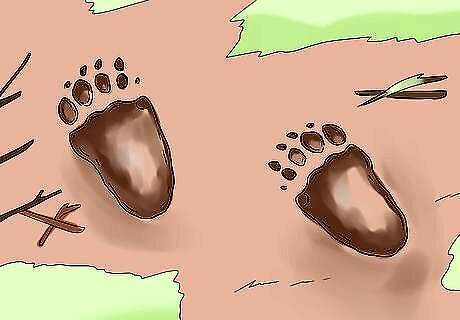
Keep an eye out for animal tracks. If you see tracks, be on alert for nearby animals. If the tracks are heading in the same direction you're walking in, change directions or turn back.
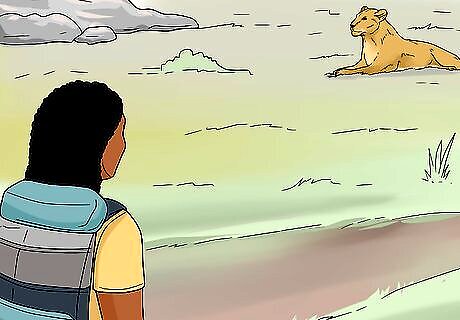
Keep your distance if you see an animal. Never approach wild animals or attempt to feed them. If you encounter an animal, appreciate from a distance that you're getting to see them in their natural environment. Most wild animals are just as afraid of humans as you are of them, and they won't attack unless provoked.
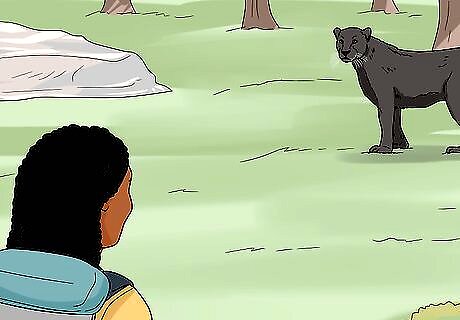
Remain calm if an animal notices you. Don't scream or make high-pitched noises. Avoid running away or you could trigger the animal to chase you. Calmly back away from the animal until it's out of sight.

Don’t bother baby animals. Never approach a baby animal in the wild, even if it appears to be alone. The baby animal’s mother is likely nearby. Wild animals are more likely to attack if they perceive you as a threat to their babies. If you're really worried about a baby animal, leave the area and contact a park ranger or local official.
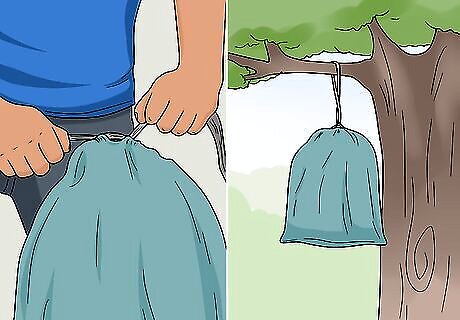
Keep your food away from wild animals. Never feed animals in the wild. Don’t litter food scraps in the forest or you could attract wild animals. If you eat something while you’re camping or hiking, pack any food scraps or trash in your backpack and carry it with you. You can also put food waste in a trash bag and tie the bag to a high tree branch.
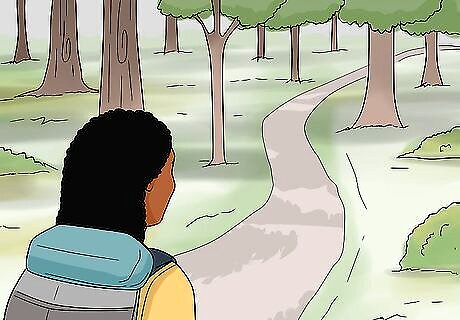
Stay on the trail when you're hiking. Look for trail markers so you don't accidentally wander off the trail. Wild animals are less likely to be on trails because of all the foot traffic.
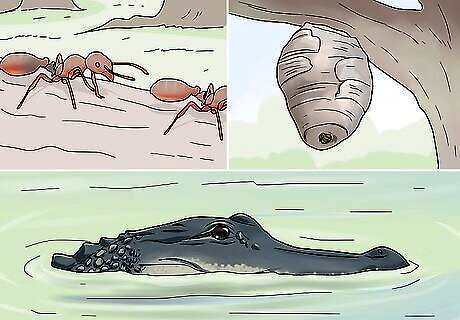
Be mindful of other dangerous animals. Watch out for fire ants and bee hives. Avoid swimming in areas with alligators. Know what to do if an elephant charges at you in the forest. Staying alert and being prepared will keep you safe in most encounters with wild forest animals.















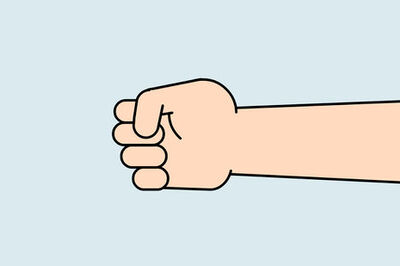


Comments
0 comment